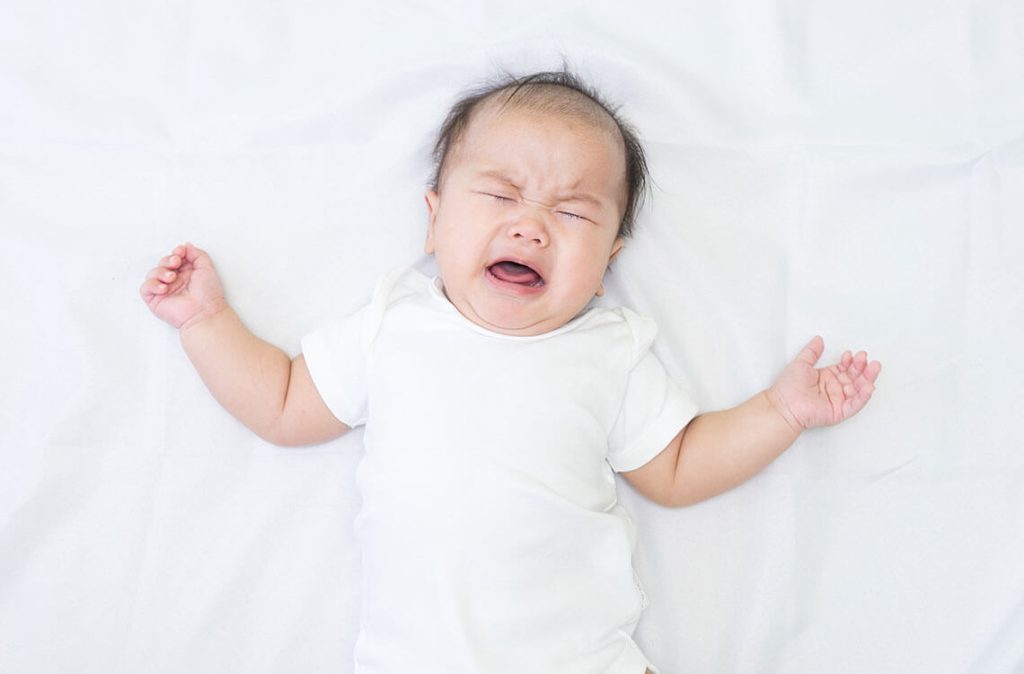New parents may often struggle with interpreting their baby’s cries.
After all, infants are limited in how they can communicate with adults.
Older children can pretty much tell you if they’re in pain. But babies can don’t have this ability.
However, they still have their own way of conveying certain emotions and desires: hunger, tiredness, discomfort and of course, pain.
Here are some common signs that indicate when your baby is dealing with a lot of anguish.
Inconsolable Crying
Babies cry or make sounds to communicate their needs to their parents. Sometimes when they need to sleep, eat, be burped or a diaper change.
But if these things are not the likely culprit of their crying, then they may be experiencing some other source of discomfort.
If you are unable to comfort them in all the usual ways, and if their crying is intense, high-pitched and continuous, then they’re definitely in pain.
Rigidity
A common indication of colic, which can be quite painful for a baby is when they pull their legs up to their stomach.
They may also curl their hands into fists and squirm a lot.
Rigid body positions like these are an indication that your baby is trying hard to fight the pain.
This is often most obvious to a parent, especially when you pick them up. They will feel stiff and tense in your arms.
Restlessness
Your baby will tend to move around a lot when they’re in pain. This includes squirming, flinching and thrash around.
On the other side of the spectrum that may signal chronic pain is if they’re barely moving.
Your baby may even lose eye contact and lie limp in your arms when you pick them up.
This means they are in so much pain that they are unable to move.
If this happens, you have to take them to the emergency room as soon as possible.
Pained Expressions
Another way to find out if your baby is truly in pain and not just fussy is to examine their facial expressions.
A baby may express pain by grimacing, wincing, furrowing their brows, and scrunching or wrinkling their faces when they’re in pain.
Their eyes are also often closed. This is often accompanied by intense crying.
Some babies who are smaller and premature may not cry although the pained expressions may be present.
Sleep Problems
Extreme pain can often disturb your baby’s sleep patterns. Causing them to wake up multiple times during the night even after you’ve fed and changed them.
However, be sure to isolate any other environmental causes that may be responsible for waking your baby up.
Pain is usually accompanied by intense crying.
So, if your baby wakes up regularly but does not cry, then it may be some other cause.
Loss of Appetite
Some babies may refuse to feed when they’re in pain.
This may partly be due to the intense crying.
Babies can’t concentrate on swallowing milk when they do that. So, no food goes in.
The hunger may actually make the pain worse, resulting in more crying.
Again, just like with stiffness and restlessness, the crying will vary depending on different babies.
Some preemie babies may not cry although they will refuse to eat as a symptom of chronic pain.
Decoding Baby Pain
If your baby fulfils most or all of the above symptoms then they may be experiencing pain somewhere.
But understanding that your baby is in pain is often only half the battle.
You may still not know why they’re in pain or where the pain is located.
So, once you know or even suspect that your baby might be in pain, immediately take them to the doctor.
Your baby may have a fever, ear infection, colic, diaper rash, teething or something much more serious.
So, don’t leave your crying baby all alone, they may be in pain and it’s time to get them the help they need.
Disclaimer: The information provided in this article is for informational purposes only and should not be considered as medical advice from Motherhood. For any health-related concerns, it is advisable to consult with a qualified healthcare professional or medical practitioner.
For more insightful stories and fun recipes, stay tuned to Motherhood Story!
